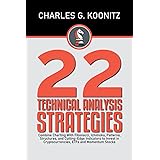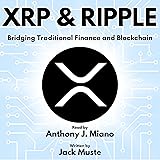Navigating the unpredictable currents of the cryptocurrency market presents a significant challenge for even the most seasoned miners. As the digital asset landscape constantly shifts, making strategic investment decisions in high-performance hardware becomes absolutely critical. Many operators find themselves grappling with market volatility, aiming to choose the right ASIC miners that promise sustained profitability beyond the current bull run.
The solution lies in meticulous planning and a forward-thinking approach, focusing on long-term stability and efficiency over speculative short-term gains. This post expands upon the insights shared in the accompanying video, delving into effective strategies for expanding a mining operation and making intelligent hardware selections. We will explore how to position your Bitcoin mining efforts for resilience against future market downturns, ensuring your investments continue to yield returns.
The Evolving Landscape of Crypto Mining Investments
The cryptocurrency market often experiences periods of intense activity followed by quieter intervals, creating a “weird lull” as observed in the video. Bitcoin’s price exceeding $110,000 and Ethereum’s valuation over $4,000 certainly indicate robust market conditions, yet many altcoins remain less enthusiastic. This fluctuating environment necessitates a careful re-evaluation of ASIC miners investment strategies for optimal outcomes.
For those expanding their infrastructure, like the video’s host building a new shed with approximately 32 available slots, the dilemma is pressing. Significant electrical infrastructure, such as a 400 amp service with a 7-2 electric rate, supports substantial operations. However, deciding between doubling down on Bitcoin miners, increasing scrypt miner holdings, or taking a substantial gamble on highly volatile altcoin miners requires deep consideration. The prudent miner must balance potential returns with inherent risks, especially when contemplating the next major hardware acquisition.
Balancing Risk: Assessing Your Current Mining Portfolio
A diversified mining portfolio is often touted as a cornerstone of risk management, but over-leveraging in any single area can be perilous. The video’s host provides a candid look into his existing setup, revealing a mix of established Bitcoin and scrypt miners alongside more speculative altcoin rigs. His current array includes powerful L7s and L9s for scrypt mining, alongside various Bitcoin mining machines like the S21 Pro and standard S21s.
Conversely, a significant portion of his portfolio is allocated to Kaspa miners and some Alephium (AL3) units. The host explicitly states he is “almost over-leveraged” on Kaspa, highlighting the aggressive and sometimes risky nature of altcoin plays. While altcoins can offer explosive growth during bull markets, their susceptibility to rapid price drops means excessive exposure can lead to substantial losses. Therefore, understanding when to consolidate gains or cut losses on highly volatile assets becomes a crucial skill for long-term sustainability in crypto mining.
Strategic Algorithms: Prioritizing Bitcoin and Scrypt Mining
Looking ahead, particularly with a potential bear market on the horizon, a strategic shift towards more stable and proven algorithms is advisable. The video emphasizes focusing heavily on SHA-256 for Bitcoin mining and scrypt mining, which supports popular coins like Dogecoin and Litecoin. This decision is rooted in a desire to “set myself up for the bear market,” even while recording in Q3 of 2025 amidst a bull cycle.
Bitcoin’s historical resilience and predictable halving cycles position it as a relatively “safer, more conservative bet” compared to many altcoins. Its established network and global adoption mitigate some of the extreme volatility associated with newer projects. Furthermore, scrypt mining offers a diversified approach within a more stable segment of the market, reducing dependency on a single algorithm. While altcoins may present opportunities for substantial, rapid gains, they also carry magnified risks. Prioritizing these foundational algorithms builds a robust and defensible mining operation capable of weathering market downturns.
Selecting Advanced ASIC Miners for Future Profitability
When expanding a mining fleet, the choice of specific ASIC miners is paramount, directly influencing long-term profitability and efficiency. The host specifically targets the Bitmain Antminer S21 XP as a prime candidate for his new shed. This particular model boasts impressive specifications, including 270 terahash per second (TH/s) while consuming 3,645 watts, resulting in an efficiency rating of 13.5 joules per terahash (J/TH).
Calculations show the S21 XP yielding approximately $15.49 in daily revenue, with an electric cost of $6.30, leaving a profit of $9.19 at a Bitcoin price of $112,000. These figures are compelling, but it is important to remember that profitability fluctuates with market conditions and electricity rates. For scrypt mining, the L9 also presents an attractive option, showing a daily revenue of $17.55. However, due to existing scrypt exposure, the S21 XP for Bitcoin mining takes precedence in this strategic plan. Investing in the latest technology ensures longevity and competitive advantage as the mining landscape rapidly evolves, continuously delivering higher performance models.
- Bitmain Antminer S21 XP: This powerful unit is central to the expansion strategy.
- Key Specifications: It delivers 270 TH/s at 3,645 watts, achieving an impressive 13.5 J/TH efficiency.
- Profitability Metrics: Daily revenue is about $15.49, incurring $6.30 in electricity costs, for a net profit of $9.19 with Bitcoin at $112,000.
- Technological Edge: The strategy emphasizes acquiring miners at the “top of the technology curve.” This approach mitigates rapid obsolescence, ensuring equipment remains competitive for longer periods.
- Comparison: Older models like the S21 (200 TH/s) quickly become less efficient, while upcoming models like the S23 (318 TH/s) further underscore the continuous innovation in Bitcoin mining hardware.
Sourcing Premium Hardware: The Luxor Advantage
Securing high-quality ASIC miners from a reliable vendor is just as important as selecting the right models. Luxor.tech emerges as a recommended source in the video, known not only for its mining pool and firmware but also for its hardware marketplace. The host’s initial introduction to Luxor was through their superior Bitcoin firmware for SHA-256 miners, a testament to their deep roots in the industry.
Luxor offers several advantages for miners: they provide US-based shipping, which significantly reduces lead times to approximately three days and eliminates concerns about customs or import fees. The S21 XP, for example, is available for $5,849.99, including shipping. Furthermore, Luxor extends beyond hardware sales, offering unique services such as a hashrate derivatives market. This innovative platform allows miners and financial institutions to manage Bitcoin mining risk, trade exposure, and finance operations, adding another layer of sophistication to risk management strategies. They also provide financing options, predominantly for enterprise clients, and offer consultation calls for new miners seeking guidance.
Navigating the Hasrate Derivatives Market
Beyond traditional hardware acquisition, the hashrate derivatives market represents an advanced tool for managing risk and optimizing returns in Bitcoin mining. Luxor’s platform enables participants to buy and sell Bitcoin hashrate, offering flexibility similar to options or futures contracts in traditional finance. This functionality allows miners to hedge against future price volatility or changes in network difficulty, effectively locking in profitability or securing future mining capacity without direct hardware ownership.
For example, a miner could sell a portion of their future hashrate to mitigate the impact of a projected Bitcoin price drop, ensuring a guaranteed revenue stream. Conversely, an investor might buy hashrate if they anticipate a significant price increase, benefiting from the upside without the operational complexities of running physical miners. This sophisticated approach transforms crypto mining into a more financially engineered endeavor, providing crucial leverage for strategic planning and long-term sustainability.
Preparing for Future Growth and Potential Market Shifts
The foresight to plan purchases in Q3 2025 with an eventual bear market firmly in mind underscores a mature crypto mining strategy. Investing in highly efficient ASIC miners with lower joules per terahash is not merely about maximizing immediate profits; it is fundamentally about ensuring sustained profitability when market conditions become less favorable. When Bitcoin prices decline, older, less efficient machines quickly become unprofitable and are often idled, but cutting-edge hardware can continue to generate revenue.
Exploring advanced cooling technologies, such as immersion cooling mentioned briefly in the video, could further enhance efficiency and longevity for future deployments. Ultimately, a steadfast focus on Bitcoin mining, supported by robust and efficient hardware, positions a mining operation for enduring success. This approach allows operators to capitalize on bull markets while maintaining resilience through inevitable bear cycles, fostering continuous expansion and profitability in the dynamic world of cryptocurrency.







